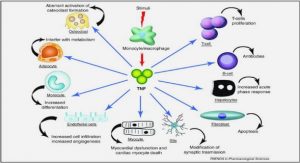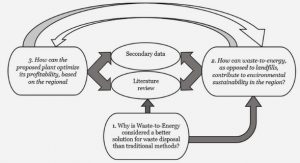Get Complete Project Material File(s) Now! »
Corporate Social Responsibility (CSR)
There are many definitions of CSR. However, the tool to reach a sustainable development is most commonly denoted, both among scholars and among practitioners, on a relatively 8 consistent basis as CSR programs/activities/initiatives. Cross-sector collaborations, particularly between business and NPOs, have increasingly by academics and practitioners been considered a powerful and unavoidable tool for implementation of successful CSR programs (Austin & Seitanidi, 2012a; Porter & Kramer, 2011). Thus, to further enrich the background to cross-sector collaborations and how it can enhance the potential for value creation, this section incorporates the role of CSR.
Stakeholder Theory
As discussed above, the importance of stakeholder engagement in successful CSR programs is widely acknowledged among scholars and practitioners (Austin & Seitanidi, 2012a; Porter & Kramer, 2011). CSR practices often incorporate stakeholder engagement as there is a natural fit between CSR and an organization’s stakeholders (Carroll, 1991). Since the purpose is to investigate how a business and a NPO can collaborate to increase the potential for enhanced value creation, this section incorporates stakeholder theory to investigate the aspects of how businesses engage stakeholders to enhance value-creation. Stakeholder theory, as it is widely accepted today, builds upon Freeman’s (1984) model where the firm is the center of the ‘mapping’ (Figure 5.2 on the next page) and the stakeholders are defined as “any group or individual who can affect or is affected by the achievement of the organization’s objectives” (Freeman, 1984 p. 46). Pre-sequent to Freeman (1984), Stanford Research Institute, SRI, (1963) defined stakeholders as “those groups without whose support the organization would cease to exist » (Freeman, 1984 p. 31).
Collaborative Value Creation (CVC) Framework
In order to address the issue of inconsistency, the CVC framework developed by Austin and Seitanidi (2012a & 2012b) will serve as an analytical framework for assessing value creation in this thesis. In addition, the framework will also function as a conceptual framework. How the framework is applied in this research is further elaborated in section 7.2.3 Method for data analysis (on p. 34). The CVC framework is comprised of four components (Figure 5.5 on the next page); (1) the value creation spectrum, which provides new reference terms for defining the spectrum of value creation, (2) the collaboration stages, which reveals how value creation varies across different types of collaborative relationships, (3) the partnering process, which reveals the value creation dynamics in the formation, selection, and implementation stages, and (4) the collaboration outcomes, which categorizes the values generated internal and external to the collaboration, i.e. the outcomes on a micro (individual) level, on a meso (organizational) level, and on a macro (societal) level (Austin & Seitanidi, 2012b, p. 2-3).
Component 1: The value creation spectrum
The value creation spectrum provides new terms for defining the sources of value creation in CSCs. Austin and Seitanidi (2012a) have identified four different sources of value creation in CSCs. The first source of value creation is (a) resource complementarity, which includes organizations’ strive to collaborate with those who can contribute with resources that one does not possess. Austin and Seitanidi (2012a) argue that the greater the resource complementarity and organizational compatibility between the partners, the greater the potential for co-creation of value. The second source of value creation is (b) resource nature, in which the organizations contribute to the collaboration through either generic resources, such as money and reputation, or organization specific resources for example knowledge, such as capabilities and relationships. Austin and Seitanidi (2012a) stress that the more partners mobilize their distinctive competencies, the greater the potential for value creation.
Component 2: Collaboration stages
As the collaboration between companies progress the value creation process moves forth as well. The collaboration continuum (CC) conceptualizes how to analyze and narrate the changing value between collaborative partners as their relationship evolves (Austin & Seitanidi, 2012a). It consists of four relationship stages; (a) philanthropic, where the collaboration is largely unilateral in nature as the business gives charitable donations to the NPO, (b) transactional, where the relationship is more of a reciprocal exchange of valuable resources, such as cause-related marketing (CRM) or sponsorships, (c) integrative, as the organizations integrate their missions, values, strategies, personnel and activities to co-create value, and (d) transformational collaborations, which has a higher level of convergence than the integrative stage as it focuses on co-creation of transformative change on a societal level (Austin & Seitanidi, 2012a). An illustration of the CC is found in Figure 5.4 on p. 14
Concluding remarks on the frame of reference and research question
The tendencies in the external environment, such as the climate change and human rights violations, have shed light on the responsibilities of businesses. External and internal forces have pressured businesses into striving for sustainable development, implementing CSR programs, and undertaking responsibilities beyond the financial profit. Independent of the motivation behind a sustainable business approach, CSR practices and stakeholder management has developed into being key strategic issues of corporations. Practitioners have realized the value and importance of becoming sustainable, despite the lack of evidence proving causality between CSR and CFP. Thus, new and innovative ways of being sustainable and creating value across the TBL are emerging; one of them being CSCs.
Table of contents :
- 1 Background
- 2 Problem
- 3 Purpose
- 4 Definitions of key concepts
- 5 Frame of reference
- 5.1 Sustainability
- 5.2 Corporate Social Responsibility (CSR)
- 5.3 Stakeholder Theory
- 5.4 Cross-sector collaboration (CSC)
- 5.5 Collaborative Value Creation (CVC) Framework
- 5.5.1 Component 1: The value creation spectrum
- 5.5.2 Component 2: Collaboration stages
- 5.5.3 Component 3: The partnering process
- 5.5.4 Component 4: The collaboration outcomes
- 5.6 Concluding remarks on the frame of reference and research question
- 6 Methodology
- 6.1 Research positioning
- 6.2 Research approach
- 6.3 Research strategy
- 6.3.1 Case studies as a strategy
- 7 Method
- 7.1 Design of the Frame of reference section
- 7.2 Research design
- 7.2.1 Sampling
- 7.2.2 Methods for data collection
- 7.2.3 Method for data analysis
- 8 Findings and Analysis
- 8.1 Background to each collaboration
- 8.1.1 Case 1: Prisma Tibro & Ankarstiftelsen
- 8.1.2 Case 2: IKEA Torsvik & Save the Children Jönköping (SC)
- 8.1.3 Case 3: The Smiling Group (TSG) & Fairtrade Sweden
- 8.2 Categorization of the empirical findings
- 8.2.1 Categorization of the collaboration stages
- 8.2.2 Categorization of the collaboration outcomes
- 8.3 Comparative analysis
- 8.3.1 Importance of the issue-salient approach
- 8.3.2 Importance of mutual dependency
- 8.3.3 Importance of organizational purpose, strategy and operations
- 8.1 Background to each collaboration
- 9 Conclusions
- 10 Reflections
- 11 Reference list
GET THE COMPLETE PROJECT
Value Creation in Cross-Sector Collaborations A comparative case study of Swedish collaborations






